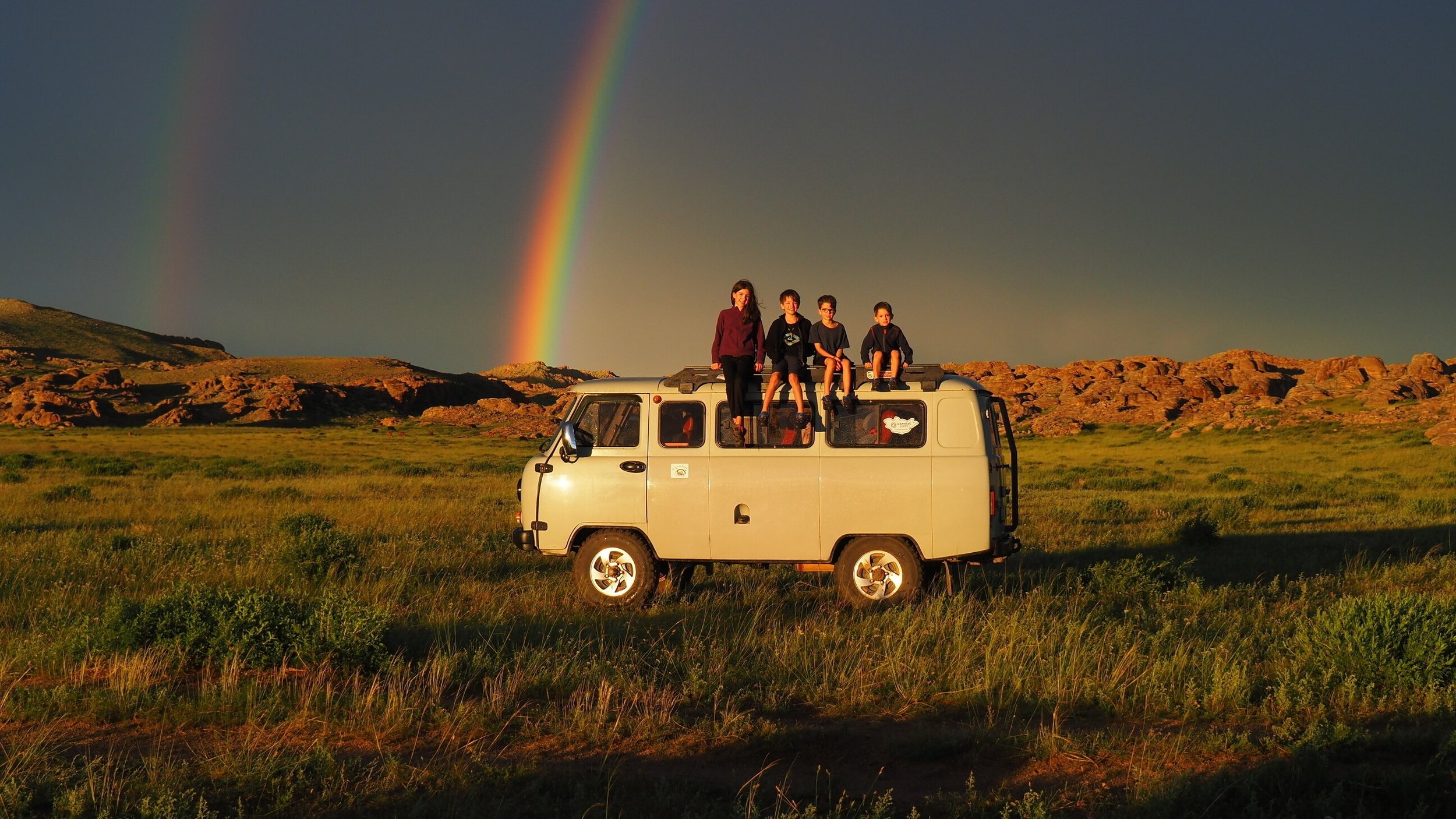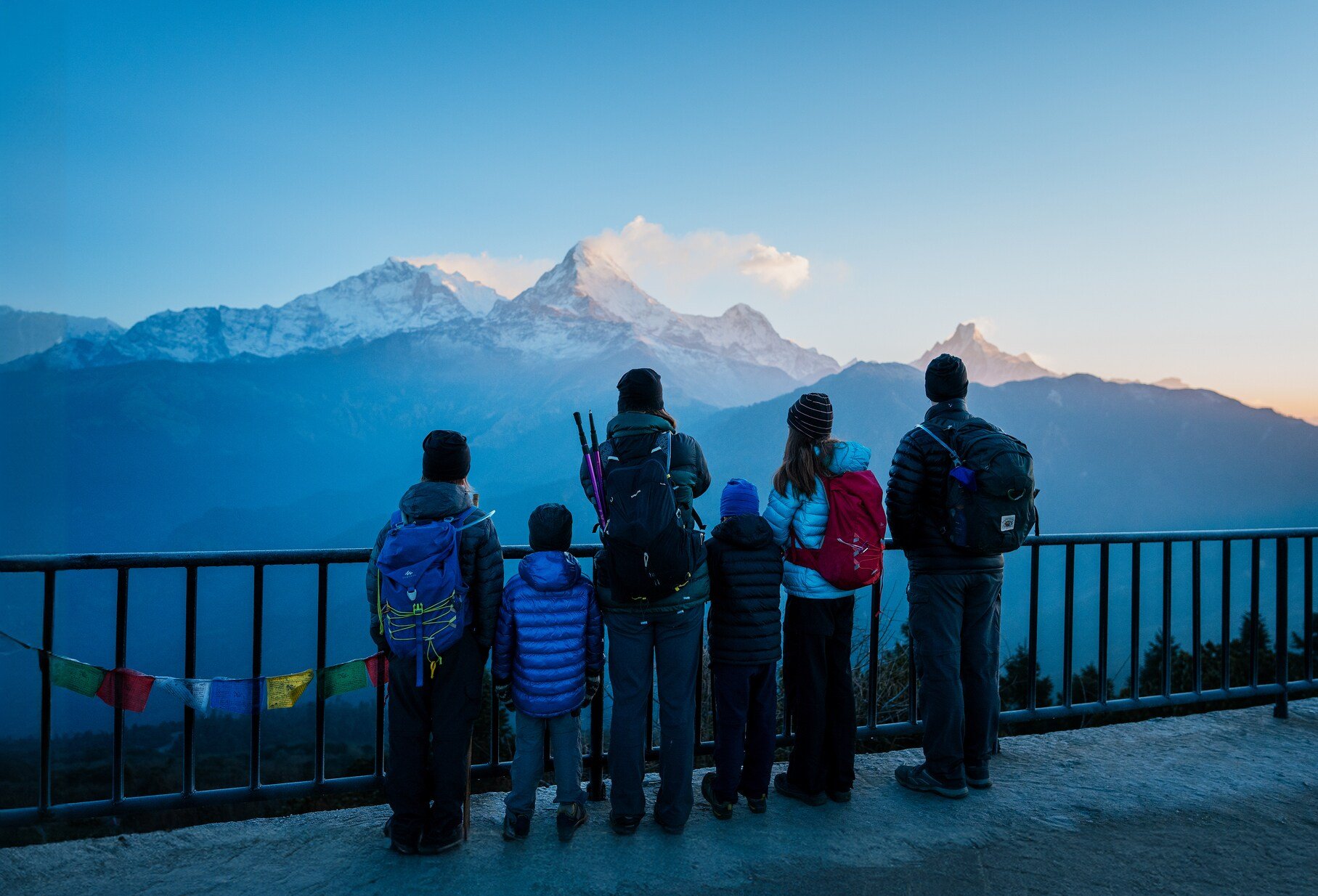‘Blink’ Review
The planet's beauty can be taken for granted too often until we make a point to appreciate it. Traveling brings a form of tranquility to some (including myself) because it forces you to step away from your day-to-day life and immerse yourself in somewhere new. Those experiences are often defining moments in time, but they’re also fleeting. We take photos because we don’t know which of those fleeting memories will stick with us to the end. Daniel Roher (Navalny) and Edmund Stenson’s latest film, Blink, celebrates the diverse and breathtaking experiences available to humanity while maintaining a somber undercurrent as the documentary’s subjects find themselves with limited time to see what the world has to offer with their own eyes.
Operating primarily as a travelogue with an endearing family at its center, Blink is frequently heartwarming despite the unfortunate circumstances that spur Édith Lemay and Sébastien Pelletier to pull their four children from school and take them on a year-long voyage across the world. Devastated by the news that three of their four kids suffer from a rare genetic condition, retinitis pigmentosa, that causes their vision to degrade slowly over time, the couple sets out to fill their family’s visual memory before they can no longer see. Many unsurprising elements within Blink still strike deep despite their predictability, and one of those is the depressing reality hiding behind the Pelletier family’s expedition as they move from country to country, unsure when their children’s vision will fully darken.
The other unsurprising facet of Blink is that it features some spectacular sights across a diverse range of places. Backed by National Geographic, the film has the emotional pull of the Pelletier family’s plight, but that essentially serves as the narrative tissue to showcase the world's many wonders. While the northern lights and impossibly gorgeous vistas are inherently breathtaking, especially with the knowledge that it may be the last time some of the kids will get to see them, the smaller moments of human imagination make Roher and Stenson’s film stand out from other travel documentaries. The family’s decision to have their kids list the experiences they want to have across the world leads to some amusing moments, such as one kid’s wish to ride a camel while drinking a juice box. The mix of culture, human invention, and natural landscapes gives the image this uniquely human element that shows that it’s not just the sight of something that is striking but the process that leads an image to exist.
Roher and Stenson generally avoid wallowing in the family’s internal struggles with the future. It’s a happy family, and the loss of sight does not change the fact that they have a bond that brings them joy. In fact, the film’s most intense struggle happens later in the movie and isn’t even related to the loss of sight. However, that also highlights some of the disconnect between the documentary and the travelogue elements of the film. There isn’t much depth in the film’s conversations about the retinal condition; instead, it focuses more on appreciating life’s unique experiences. However, this isn’t particularly new ground, even for National Geographic. The question of how the family could afford such a lengthy, expensive excursion for six people is only passingly answered, but the film never quite acknowledges that filling a visual memory bank is a luxury few can afford, especially in that timeframe.
There’s an upbeat nature to Blink that always keeps the film having a glossiness to the family’s struggle. It helps keep the film feeling breezy and not too emotionally draining on the viewer. That’s not necessarily bad, but it somewhat undermines the toll a diagnosis as severe as retinitis pigmentosa can have on a family. Understanding that this is one family’s experience is imperative to not feel that disconnect, and while there are moments of vulnerability throughout, Roher and Stenson seem more interested in how a family can remain optimistic. It results in a consistently heartwarming film with occasional cracks in the armor. Still, it can’t help but feel like it’s missing the emotion its central conflict should have easily provided. Instead, it’s a quaint travel documentary that never quite feels more than slight.


